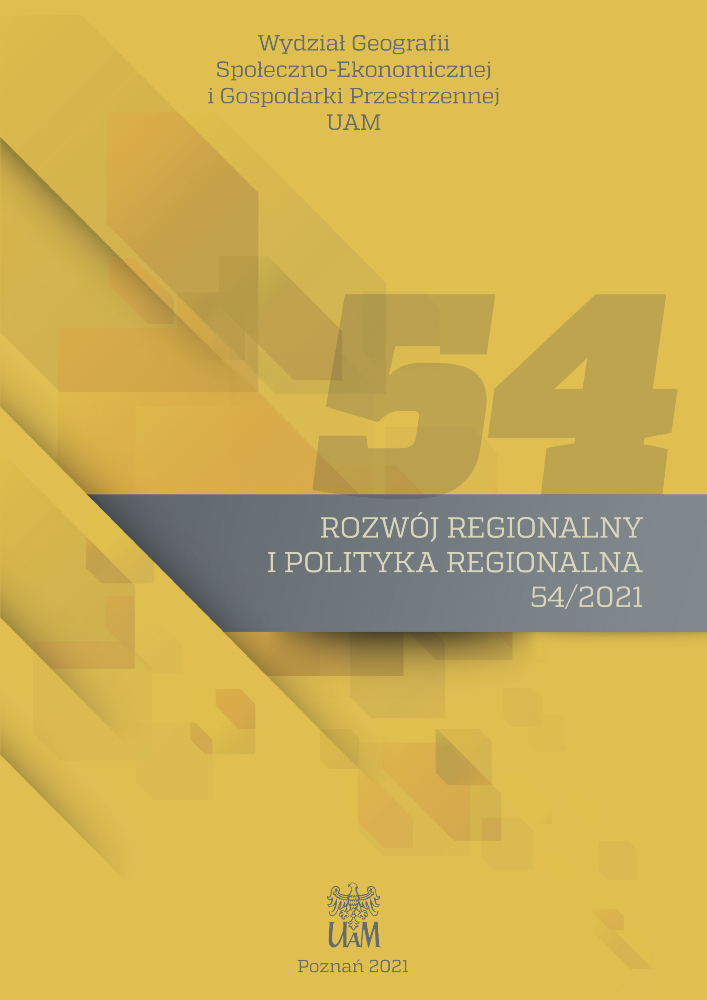Abstract
The paper aims at revealing the changing role of various discourses of identity in the urban landscape of the Upper Silesian town of Gliwice in southern Poland. The town was a part of Poland, then the Kingdom of Bohemia, the Habsburg Empire, the Kingdom of Prussia since the mid-18th century, Germany and again Poland since 1945. Discourses of identity of different geographical scope are analysed: local, regional (Upper Silesian and this of the former Polish Eastern Borderland), national (Polish and German in particular) and transnational (religious and socialist). The authors examine to what extent these various types of identity found expression in the street names, symbolic structures as well as functions and meanings of important buildings. They consider which elements of identity were continously present in the urban narrative despite the radical political changes. In addition, the role of various groups of stakeholders in the formation of the urban landscape is discussed, including the influence of the state and local authorities, enterprises and non-governmental organizations.
References
Ashworth G.J., Graham B., Tunbridge J.E. 2007. Pluralising pasts. Heritage, identity and place in multicultural societies. Pluto Press, London.
Ashworth G.J., Tunbridge J.E. 1996. Dissonant heritage: The management of the past as a resource in conflict. Wiley & Sons, Chichester.
Bandarin F., van Oers R. 2012. The Historic Urban Landscape: managing heritage in an urban century. Wiley & Sons, Chichester.
Bierwiaczonek K., Nawrocki T. 2019. Gliwickie narracje tożsamościowe. [W:] P. Kisiel i in. (red.), Miasto, ekonomia, kultura: księga dedykowana Profesor Annie Karwińskiej. Scholar, Warszawa, s. 109–122.
Bilska-Wodecka E. 2012. Człowiek religijny i związki wyznaniowe w przestrzeni miasta w XX i na początku XXI w. Instytut Geografii i Gospodarki Przestrzennej UJ, Kraków.
Boroń P. 2015. Dawne Gliwice. Studia z dziejów miasta i jego mieszkańców do końca XIX w. Wokół gliwickiego Rynku. Muzeum w Gliwicach, Gliwice.
Convery I., Corsane G., Davis P. (red.) 2014. Displaced heritage. Responses to disaster, trauma and loss. Boydell Press, Woodbridge.
Czepczyński M. 2008. Cultural landscapes of post-socialist cities. Representation of powers and needs. Ashgate, Aldershot.
Ćwiklak K. 2011. Gliwice – zapomniany mikrokosmos: semiotyka przestrzeni miasta w polskiej i niemieckiej prozie współczesnej. Rocznik Komparatystyczny, 2: 43–64.
Domański B. 2000. The impact of spatial and social qualities on the reproduction of local economic success: the case of path dependent development of Gliwice. Prace Geograficzne, 106: 35–54.
Graham B., Howard P. (red.) 2008. The Ashgate research companion to heritage and identity. Ashgate, Aldershot.
Gwosdz K. 2004. Ewolucja rangi miejscowości w konurbacji przemysłowej. Przypadek Górnego Śląska (1830–2000). IGiGP UJ, Kraków.
Harrison R. 2013. Heritage: Critical approaches. Routledge, London.
Howard P. 2003. Heritage: management, interpretation, identity. Continuum, London.
Kuszyk K. 2019. Poniemieckie. Wydawnictwo Czarne, Wołowiec.
Logan W., Reeves K. (red.) 2009. Places of pain and shame. Dealing with ‘difficult heritage’. Routledge, London.
Mazur Z. (red.) 1997. Wokół niemieckiego dziedzictwa kulturowego na Ziemiach Zachodnich i Północnych. Instytut Zachodni, Poznań.
Mitchell D. 2005. Landscape. [W:] D. Atkinson i in. (red.), Cultural geography. A critical dictionary of key concepts. I.B. Tauris, London, s. 49–56.
Moore N., Whelan I. (red.) 2007. Heritage, memory and the politics of identity. New perspectives on the cultural landscape. Ashgate, Aldershot.
Murzyn M. 2008. Heritage transformation in Central and Eastern Europe. [W:] B. Graham, P. Howard (red.), The Ashgate research companion to heritage and identity. Ashgate, Aldershot, s. 315–346.
Murzyn-Kupisz M. 2010a. Podmioty na rynku dziedzictwa kulturowego. Studia Regionalne i Lokalne, 3: 61–80.
Murzyn-Kupisz M. 2010b. Współczesne funkcje dziedzictwa kulturowego górnośląskich miast. Stare i Nowe Problemy Badawcze w Geografii Społeczno-Ekonomicznej, 1: 147–156.
Murzyn-Kupisz M., Gwosdz K. 2011. The changing identity of the Central European city: the case of Katowice. Journal of Historical Geography, 37: 113–126.
Nawrocki T. 2015. Nieobecne dziedzictwo? Przypadek Gliwic. Forum Socjologiczne, 6: 241–256.
Oslislo-Piekarska Z. 2015. Nowi Ślązacy. Miasto, design, tożsamość. ASP w Katowicach, Katowice.
Pawłowska K., Swaryczewska M. 2002. Ochrona dziedzictwa kulturowego. Zarządzanie i partycypacja społeczna. Uniwersytet Jagielloński, Kraków.
Rampley M. (red.) 2012. Heritage, ideology and identity in Central and Eastern Europe: Contested pasts, contested presents. Boydell Press, Rochester.
Smith L., Akagawa N. (red.) 2009. Intangible heritage. Routledge, London.
UNESCO 2011. Recommendation on the Historic Urban Landscape, including a glossary of definitions, 10 November 2011 (http://portal.unesco.org/en/ev.php-URL_ID=48857&URL_DO=DO_TOPIC&URL_SECTION=201.html dostęp: 10.01.2021).
Ustawa z dnia 23 lipca 2003 r. o ochronie zabytków i opiece nad zabytkami (Dz.U. z 2003 r., nr 162, poz. 1568, art. 3; http://isap.sejm.gov.pl/isap.nsf/download.xsp/WDU20031621568/U/D20031568Lj.pdf dostęp: 10.01.2021).
License
Copyright (c) 2021 Bolesław Domański, Monika Murzyn-Kupisz

This work is licensed under a Creative Commons Attribution 4.0 International License.

